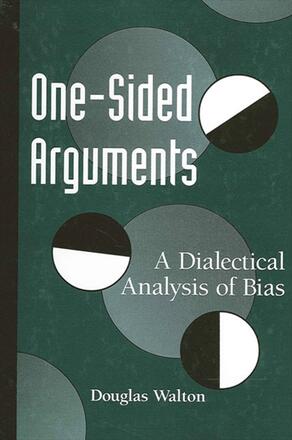
One-Sided Arguments
A Dialectical Analysis of Bias
Alternative formats available from:
A practical manual for evaluating bias that will be useful to anyone who has to deal with arguments, whether in academic reading or writing, or in everyday conversation.
Description
We often feel that an argument should be doubted or held as suspicious because it has a bias. But bias isn't always wrong. It is a normal phenomenon in advocacy argumentation, and in many cases it is to be expected. Yet sometimes bias can be quite harmful in argumentation. In this book, bias is defined as one-sided advocacy of a point of view in argumentation. It is shown to be harmful, or properly subject to critical condemnation, only when the dialogue exchange is supposed to be a balanced, two-sided exchange of viewpoints.
The book concedes the postmodernist premise that bias is quite normal in everyday conversational arguments, and that a finding of bias should not, by itself, constitute grounds for criticizing an argument as critically deficient or fallacious. But the book strongly disagrees with the postmodernist conclusion that no standard of rationality can be brought to bear to condemn narrowly interest-based or one-sided arguments as biased. It is argued that in some cases narrow, one-sided partisanship in an argument is justifiably a basis for negative criticism of the worth of the argument.
Douglas Walton is Professor of Philosophy at the University of Winnipeg. He is the author of many works on informal logic and argumentation, including Appeal to Pity: Argumentum ad Misericordiam, also published by SUNY Press.
Reviews
"Walton tends to write books that need to be written, and in many cases he leads the field by being the first to draw attention to a topic that has been inadequately treated or not appreciated for its importance. In this book, he reads beyond the superficial assumption that all advocacy argumentation will be problematically biased to consider that such discourses are potentially reasonable and then discuss when this might be the case. There are also some very good case studies dispersed throughout."—Christopher Tindale, Trent University